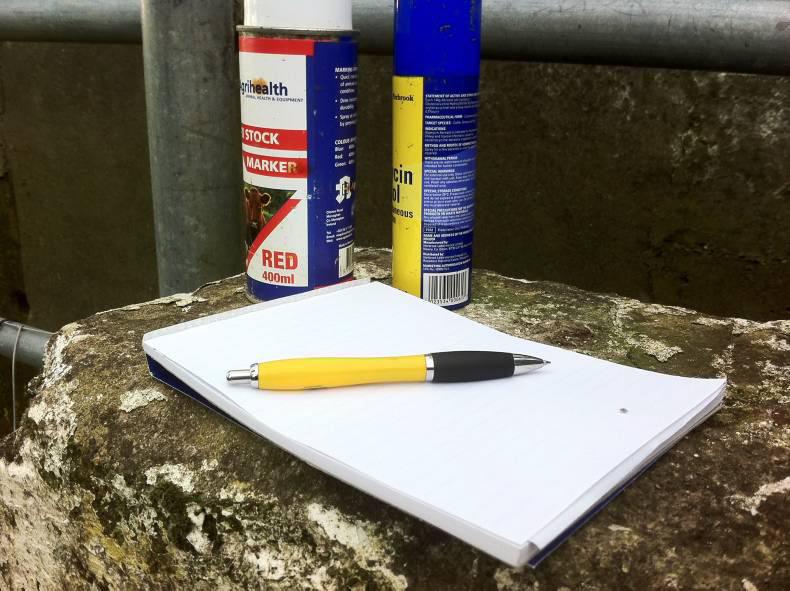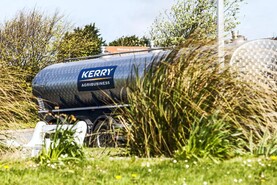Prior to the big ‘ICT in Agriculture’ seminar at the Aviva Stadium last Friday, the ICT research group I work for off-farm held its own Sofa Session on smart-agri.
To give some farming context to the technology presentations, I opened the event with a short talk on our farm’s current priorities. The technologists were not impressed when I didn’t have a single ICT issue anyplace on our to-do list!
I did make amends though when I talked through the priorities and highlighted wherever ICT might be able to help. The notion of a creating a cost-effective Baa-Call, based on the Moo-Call device, did not go down well however, when many in the room didn’t seem to understand the physics or the biology involved in a sheep’s short tail!
The other three presenters spoke about smart-agri projects they’re working on. Their research was very impressive and it was no coincidence that each of them was involved in dairy-related work. This is the sector that seems to have the cash to invest in ICT and smart-agri at the moment. What was also common across their research was the importance of data on which they could carry out analysis and identify various trends. For example, one project is combining weather, market price, and direct farming data to try to predict the amount of milk that will be produced in any particular time period.
Large amounts of accurate farm data
An issue that was identified on several occasions was the need for large amounts of accurate farm data. The more data you have and the more accurate it is, then the better your analysis and predictions. One presenter summed up the dilemma when she said, “How do we get the information out of farmers’ heads and onto the paper?” In the next breath, she mentioned incentives and it was obvious that this was an ongoing problem for smart-agri researchers.
There is no doubt that farmers collect their own data. Some computerise it, some write it down on paper, and others keep it in their head.
Now, however, the value of this data is increasing as researchers and policy professionals alike seek to better understand the situation on the ground for farming enterprises. Funding is being made available for researchers to come up with new services, products, and advice for the agri sector. To do this work, researchers need farm data – large, accurate amounts of it, as stated above.
Fast-forward then to the ‘ICT in Agriculture’ event organised by Teagasc in the Aviva last week. It is little wonder that one of the big questions that went unanswered on the day was who owns the data that farmers generate. For what it’s worth, I think farmers naturally own it and therefore it’s theirs to make a profit from. However, whoever collects that data—be it a milk processor, a phone app, or a fertiliser sales rep—will probably make a case for their part-ownership too.
This idea of collecting and making your data available is certainly one that will become more of an issue as more researchers and ‘service providers’ come to realise that they can create value if they can get information out of farmers’ heads and onto paper.
Kieran Sullivan and his brother farm part-time in Co. Waterford. You can follow him on Twitter: @kieran_sullivan
Read more
Farmer writes: a wife with a photographic memory of pedigrees
Finding New Zealand’s farming greatness beneath the surface
Prior to the big ‘ICT in Agriculture’ seminar at the Aviva Stadium last Friday, the ICT research group I work for off-farm held its own Sofa Session on smart-agri.
To give some farming context to the technology presentations, I opened the event with a short talk on our farm’s current priorities. The technologists were not impressed when I didn’t have a single ICT issue anyplace on our to-do list!
I did make amends though when I talked through the priorities and highlighted wherever ICT might be able to help. The notion of a creating a cost-effective Baa-Call, based on the Moo-Call device, did not go down well however, when many in the room didn’t seem to understand the physics or the biology involved in a sheep’s short tail!
The other three presenters spoke about smart-agri projects they’re working on. Their research was very impressive and it was no coincidence that each of them was involved in dairy-related work. This is the sector that seems to have the cash to invest in ICT and smart-agri at the moment. What was also common across their research was the importance of data on which they could carry out analysis and identify various trends. For example, one project is combining weather, market price, and direct farming data to try to predict the amount of milk that will be produced in any particular time period.
Large amounts of accurate farm data
An issue that was identified on several occasions was the need for large amounts of accurate farm data. The more data you have and the more accurate it is, then the better your analysis and predictions. One presenter summed up the dilemma when she said, “How do we get the information out of farmers’ heads and onto the paper?” In the next breath, she mentioned incentives and it was obvious that this was an ongoing problem for smart-agri researchers.
There is no doubt that farmers collect their own data. Some computerise it, some write it down on paper, and others keep it in their head.
Now, however, the value of this data is increasing as researchers and policy professionals alike seek to better understand the situation on the ground for farming enterprises. Funding is being made available for researchers to come up with new services, products, and advice for the agri sector. To do this work, researchers need farm data – large, accurate amounts of it, as stated above.
Fast-forward then to the ‘ICT in Agriculture’ event organised by Teagasc in the Aviva last week. It is little wonder that one of the big questions that went unanswered on the day was who owns the data that farmers generate. For what it’s worth, I think farmers naturally own it and therefore it’s theirs to make a profit from. However, whoever collects that data—be it a milk processor, a phone app, or a fertiliser sales rep—will probably make a case for their part-ownership too.
This idea of collecting and making your data available is certainly one that will become more of an issue as more researchers and ‘service providers’ come to realise that they can create value if they can get information out of farmers’ heads and onto paper.
Kieran Sullivan and his brother farm part-time in Co. Waterford. You can follow him on Twitter: @kieran_sullivan
Read more
Farmer writes: a wife with a photographic memory of pedigrees
Finding New Zealand’s farming greatness beneath the surface






 This is a subscriber-only article
This is a subscriber-only article










SHARING OPTIONS: